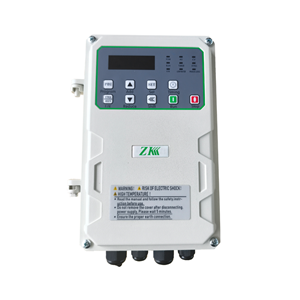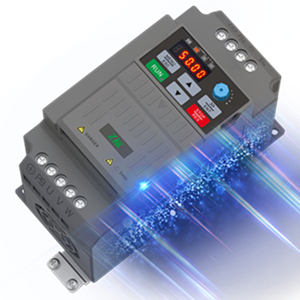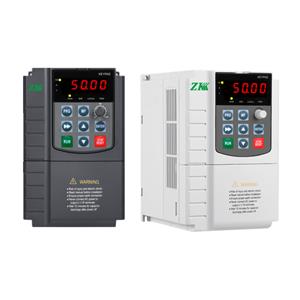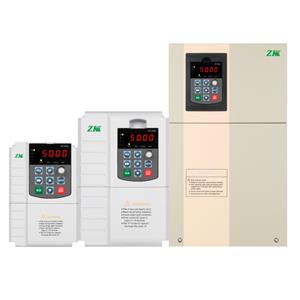Revolutionizing Textile Machinery: How Variable Frequency Inverters Drive Efficiency and Innovation
The textile machinery sector,a pillar of global manufacturing,is embracing a new era of efficiency and precision through the widespread adoption of variable frequency inverters.These intelligent devices are transforming spinning,weaving, dyeing,and finishing processes,enabling manufacturers to achieve unprecedented levels of productivity, energy savings,and product consistency.
Energy Savings:Powering Sustainable Textile Production
Textile mills are among the most energy-intensive industrial facilities,with motors driving spinning frames,looms,and pumps accounting for over 60% of total energy use.Variable frequency inverters tackle this challenge by dynamically adjusting motor speeds to match real-time operational demands.For example,in high-speed weaving machines,variable frequency inverters reduce energy consumption by 30–50% compared to fixed-speed systems.A case study at a Chinese textile plant revealed annual savings of $200,000 after retrofitting 150 motors with variable frequency inverters,contributing to the industry’s goal of reducing CO₂ emissions by 25% by 2025.
Precision Control for Flawless Fabric Quality
In textile manufacturing,even minor speed variations can lead to defects like uneven yarn tension or fabric misalignment.Variable frequency inverters provide surgical precision:
Spinning Machines:variable frequency inverters maintain exact spindle speeds (e.g.,18,000 RPM ±0.5%),ensuring uniform yarn thickness and minimizing breakage rates.
Air-Jet Looms:Real-time adjustments to air pressure and shuttle speed prevent thread slippage,reducing fabric defects by 40%.
Dyeing Equipment: Synchronized control of pump speeds and chemical injection rates ensures consistent color penetration,critical for premium textiles.
Extending Machinery Lifespan and Reducing Downtime
Traditional textile machinery suffers from abrupt starts/stops,causing mechanical wear and frequent breakdowns.Variable frequency inverters address these issues through:
Soft Start Technology:Gradual motor acceleration reduces belt and gear stress,extending component life by up to 60%.
Automatic Load Detection:Instant torque adjustments prevent overloads during thread breaks or fabric jams.
A Turkish textile mill reported a 50% drop in maintenance costs after installing variable frequency inverters across its spinning and winding units.
Smart Textile Manufacturing with IoT-Enabled Variable Frequency Inverters
Modern variable frequency inverters are central to Industry 4.0-enabled textile factories:
Predictive Maintenance:Embedded sensors monitor motor temperature,vibration,and current draw,alerting technicians to potential failures.For instance,Schneider Electric’s EcoStruxure platform uses variable frequency inverter data to reduce unplanned downtime by 70%.
AI-Powered Optimization:Machine learning algorithms analyze production data to auto-adjust machine speeds for maximum efficiency.
Energy Recovery:Regenerative variable frequency inverters in high-inertia machines (e.g.,warping frames) convert braking energy into reusable electricity,cutting net energy use by 18%.
Key Applications in Textile Machinery
Ring Spinning Frames:
variable frequency inverters dynamically adjust spindle speeds based on yarn thickness,reducing breakage rates by 30% while boosting output by 25%.Circular Knitting Machines:
Precision speed control adapts to elastic yarn variations,eliminating "needle lines" in stretch fabrics.Stenter Machines:
Integrated variable frequency inverters regulate heat zones and conveyor speeds,ensuring uniform fabric shrinkage and softness.
Overcoming Industry-Specific Challenges
While variable frequency inverters offer transformative benefits,textile applications face unique hurdles:
High Humidity Environments:IP66-rated variable frequency inverters with corrosion-resistant coatings withstand harsh dyeing and washing sections.
Harmonic Mitigation:Advanced filters in variable frequency inverters like Danfoss’s VLT® series ensure compliance with IEEE 519 power quality standards.
Rapid Speed Changes:Vector-controlled variable frequency inverters achieve 0.1-second acceleration times for high-speed looms without torque loss.
Market Growth and Future Innovations
The global variable frequency inverter market for textile machinery is projected to grow at 7.9% CAGR,reaching $2.3 billion by 2027.Cutting-edge developments include:
Hybrid Solar-variable frequency inverters Systems:Indian mills combine solar panels with variable frequency inverters to power spinning machines off-grid,reducing diesel dependency by 80%.
Digital Twin Integration:Virtual simulations optimize variable frequency inverters parameters for new fabric types before physical production.
5G-Enabled Remote Control:Real-time adjustments to variable frequency inverters settings across global factories via low-latency networks.
Conclusion
Variable frequency inverters are redefining the economics of textile manufacturing,offering a powerful blend of energy efficiency,precision,and smart automation.As the industry faces pressure to reduce costs and environmental impact,VFIs have transitioned from optional upgrades to essential components.Manufacturers investing in this technology today are positioning themselves as leaders in the race toward sustainable,high-quality textile production.




